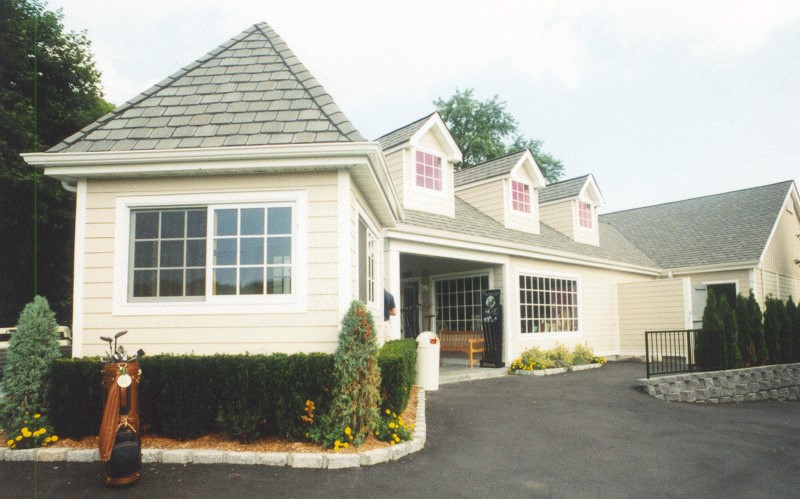The Evolution of Plandome Country Club
The story of Plandome Country Club began as an afterthought. When the founding fathers acquired the central portion of the Leeds estate in 1928, their vision was to develop a prestigious residential community extending along Stonytown Road from Plandome Road to Port Washington Boulevard. However, the Stock Market Crash of 1929 altered their plans, leading to the establishment of a golf club instead. This change of course proved fortuitous, as Plandome
Country Club now stands as one of Nassau County's most picturesque and challenging golf courses, with its opening hole regarded as one of the toughest in the Met Area.
The Plandome Golf Club engaged Orrin Smith, a relatively unknown architect from New Britain, Connecticut, to design the course. By July 1930, Smith had finalized his plans, and the course was officially opened on Decoration Day, May 31, 1931. Smith's design skillfully incorporated the site's natural beauty, preserving many of the existing trees and plantings while fitting eighteen holes into the 107-acre property.
Initially, Plandome was known for its English-style ambiance and shared a reciprocal arrangement with the Garden City Country Club. The original Leeds farmhouse—a grand, three-story white clapboard structure with distinctive pillared architecture—served as the clubhouse, with the second floor reserved exclusively for ladies. Unfortunately, on December 23, 1958, a devastating fire during a snowstorm caused $350,000 in damage and claimed the life of the club’s night watchman. This led to the construction of the current brick clubhouse with its circular entrance drive.
In 1955, the club underwent significant reorganization, with the new Plandome Country Club acquiring the golf course and buildings from the Plandome Golf Club, thus preventing the property from being sold for real estate development.
Recent Improvements
Recent upgrades at Plandome include the installation of elegant mahogany lockers for the men and the addition of a unique nineteenth hole a legitimate par-3 situated between the original seventeenth green and eighteenth tee enhancing the course's appeal and challenge.
Notable Figures and Stories
The club’s early golf professional, David Hunter, returned from Prestwick, Scotland, during the winter of 1930-1931 to interview for the head position. Upon reaching the ridge behind the first green, overlooking much of the golf course, he remarked that Plandome was the only course he had ever liked in winter, finding it reminiscent of Scotland.
Among the club's notable history is the 1962 club championship winner, R.L. Riggs, better known as Bobby Riggs. Renowned for his sports hustling, Riggs could have won several club titles at Plandome, though this might have affected his betting reputation. The course is rich with Riggs' lore, including a legendary tale of him hitting a tee shot on Number 18 into the swimming pool to win a bet. The hills of Plandome are alive with stories of his practice sessions and memorable feats.
The story of Plandome Country Club began as an afterthought. When the founding fathers acquired the central portion of the Leeds estate in 1928, their vision was to develop a prestigious residential community extending along Stonytown Road from Plandome Road to Port Washington Boulevard. However, the Stock Market Crash of 1929 altered their plans, leading to the establishment of a golf club instead. This change of course proved fortuitous, as Plandome
Country Club now stands as one of Nassau County's most picturesque and challenging golf courses, with its opening hole regarded as one of the toughest in the Met Area.
The Plandome Golf Club engaged Orrin Smith, a relatively unknown architect from New Britain, Connecticut, to design the course. By July 1930, Smith had finalized his plans, and the course was officially opened on Decoration Day, May 31, 1931. Smith's design skillfully incorporated the site's natural beauty, preserving many of the existing trees and plantings while fitting eighteen holes into the 107-acre property.
Initially, Plandome was known for its English-style ambiance and shared a reciprocal arrangement with the Garden City Country Club. The original Leeds farmhouse—a grand, three-story white clapboard structure with distinctive pillared architecture—served as the clubhouse, with the second floor reserved exclusively for ladies. Unfortunately, on December 23, 1958, a devastating fire during a snowstorm caused $350,000 in damage and claimed the life of the club’s night watchman. This led to the construction of the current brick clubhouse with its circular entrance drive.
In 1955, the club underwent significant reorganization, with the new Plandome Country Club acquiring the golf course and buildings from the Plandome Golf Club, thus preventing the property from being sold for real estate development.
Recent Improvements
Recent upgrades at Plandome include the installation of elegant mahogany lockers for the men and the addition of a unique nineteenth hole a legitimate par-3 situated between the original seventeenth green and eighteenth tee enhancing the course's appeal and challenge.
Notable Figures and Stories
The club’s early golf professional, David Hunter, returned from Prestwick, Scotland, during the winter of 1930-1931 to interview for the head position. Upon reaching the ridge behind the first green, overlooking much of the golf course, he remarked that Plandome was the only course he had ever liked in winter, finding it reminiscent of Scotland.
Among the club's notable history is the 1962 club championship winner, R.L. Riggs, better known as Bobby Riggs. Renowned for his sports hustling, Riggs could have won several club titles at Plandome, though this might have affected his betting reputation. The course is rich with Riggs' lore, including a legendary tale of him hitting a tee shot on Number 18 into the swimming pool to win a bet. The hills of Plandome are alive with stories of his practice sessions and memorable feats.


